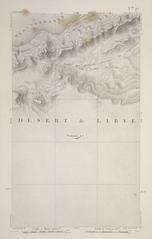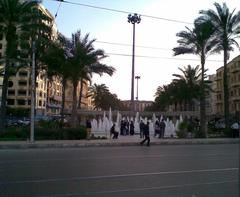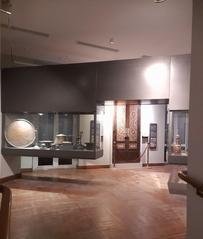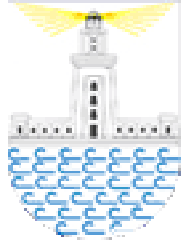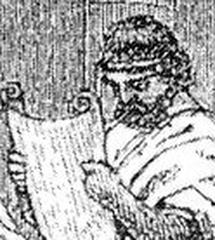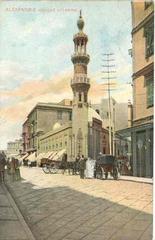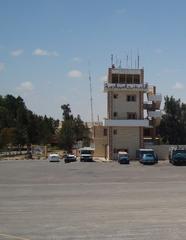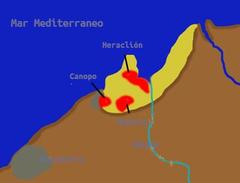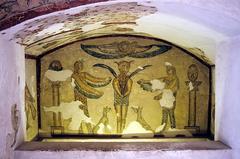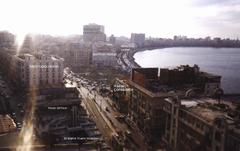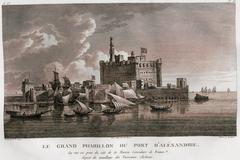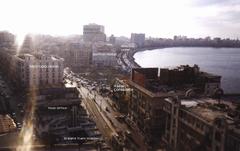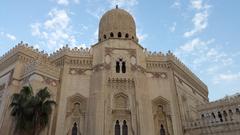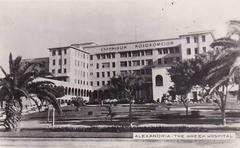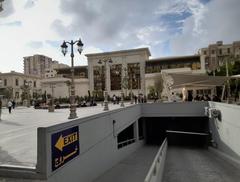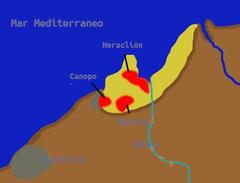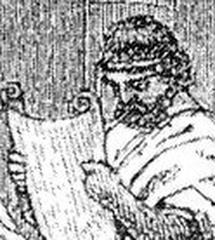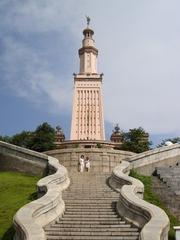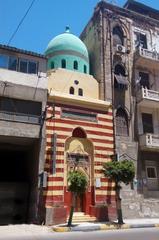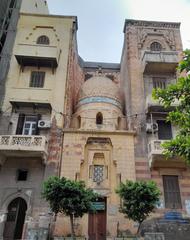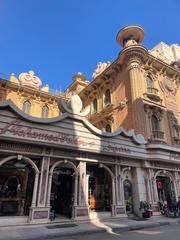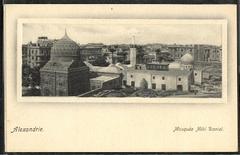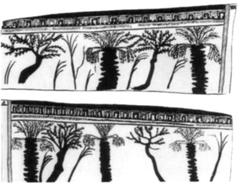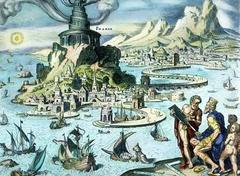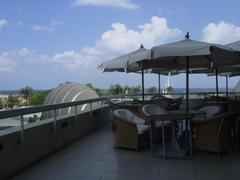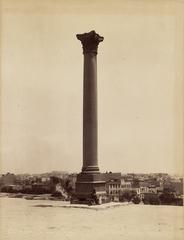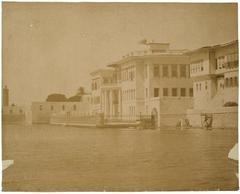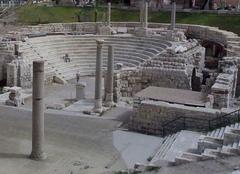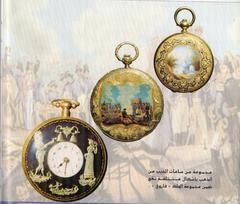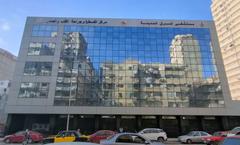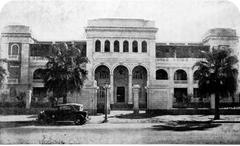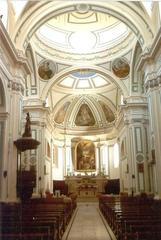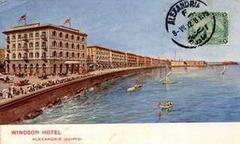Rhacotis Visiting Hours, Tickets, and Alexandria Historical Sites Guide
Date: 14/06/2025
Introduction to Rhacotis and Its Significance
Hidden beneath the bustling streets of modern Alexandria is Rhacotis, the ancient Egyptian settlement that seeded one of the Mediterranean’s most storied cities. Before Alexander the Great’s arrival in 331 BCE, Rhacotis thrived as a port, military outpost, and center of trade and religious life. Its strategic location between the Mediterranean Sea and Lake Mareotis fostered economic and cultural exchanges, laying the groundwork for Alexandria’s emergence as a cosmopolitan metropolis renowned for its multicultural heritage.
While much of Rhacotis remains inaccessible, visitors can explore its enduring legacy through Alexandria’s archaeological sites and museums. The Alexandria National Museum and Kom el-Dikka archaeological park offer fascinating glimpses into the city’s layered history, including Rhacotis’s advanced infrastructure, port facilities, and vibrant social fabric. Modern underwater excavations, led by organizations such as the European Institute for Underwater Archaeology, continue to reveal new insights into Rhacotis’s urban sophistication and cultural significance (Alexandria National Museum; Encyclopaedia Britannica; IEASM).
This comprehensive guide provides practical visitor information—covering visiting hours, ticket prices, accessibility, and guided tours—while highlighting key attractions and current events to enrich your exploration of Alexandria and its ancient roots.
Table of Contents
- Introduction to Rhacotis Historical Site
- Early Origins and Historical Context
- Archaeological Evidence and Urban Features
- Transformation Under Alexander the Great
- Cultural and Social Dynamics
- Archaeological Discoveries and Preservation
- Religious and Mythological Importance
- Rhacotis in Ancient Literature and Modern Scholarship
- Visiting Information: Hours, Tickets, and Location
- Travel Tips and Guided Tours
- Nearby Attractions in Alexandria
- Special Events and Exhibitions
- Visual and Interactive Experiences
- Frequently Asked Questions (FAQ)
- Plan Your Visit and Explore More
- References
Introduction to Rhacotis Historical Site
Rhacotis, the precursor to Alexandria, was a vital Egyptian port and settlement long before it became the nucleus of Alexander’s Hellenistic city. Today, its legacy remains visible in the city’s urban core, port structures, and significant museum collections, making it an essential stop for history enthusiasts and cultural explorers.
Early Origins and Historical Context
Location and Early Development
Rhacotis (Egyptian: Râ-Kedet; Greek: Ῥακῶτις) occupied a prime spot on Egypt’s northern coast, west of the Canopic branch of the Nile. Its proximity to both the Mediterranean and Lake Mareotis facilitated maritime trade and fresh water supply, making it a hub for commerce and military control (Encyclopaedia Britannica).
Classical sources, including Strabo and Pliny the Elder, reference Rhacotis as the original settlement where Alexandria would rise. Archaeological findings—such as ancient wood pilings and imported pottery—indicate a thriving community engaged in broad Mediterranean trade (UNESCO World Heritage).
Archaeological Evidence and Urban Features
Excavations in Alexandria’s eastern harbor and surrounding districts have uncovered:
- Port Facilities: Foundations of ancient quays, granite blocks, and sphinxes repurposed by later rulers (IEASM).
- Urban Infrastructure: Evidence of planned streets, water management systems, and sewage networks.
- Artifacts: Domestic wares, amphorae, and tools that reflect Rhacotis’s integration into regional and international trade (Alexandria National Museum).
Underwater archaeology has dramatically expanded our understanding of Rhacotis’s harbor installations and its role in the formation of Alexandria.
Transformation Under Alexander the Great
In 331 BCE, Alexander the Great selected Rhacotis as the foundation for his new city. Greek architect Dinocrates designed Alexandria’s grid plan, incorporating Rhacotis as the Egyptian quarter. Under the Ptolemaic dynasty, this area became home to Egyptian priests, artisans, and laborers, preserving local traditions within the expanding Greek city (British Museum).
Cultural and Social Dynamics
Alexandria’s Egyptian quarter continued to honor indigenous deities and customs, even as the city’s population diversified to include Greeks, Jews, and later Romans. The syncretism of religious practices—exemplified by the cult of Serapis—highlighted the city’s multicultural identity (Metropolitan Museum of Art).
Archaeological Discoveries and Preservation
Recent underwater and land-based excavations have revealed:
- Granite and Limestone Structures: Remnants of temples, public buildings, and ceremonial spaces.
- Stone Anchors and Shipwrecks: Further evidence of Rhacotis’s maritime importance (IEASM).
- Museum Exhibits: Artifacts from these discoveries are on display at the Alexandria National Museum and Graeco-Roman Museum.
Ongoing research continues to shed light on Rhacotis’s urban resilience and adaptability.
Religious and Mythological Importance
Rhacotis was a center for the worship of Isis, revered as the protector of sailors and the harbor. The cult of Serapis, blending Greek and Egyptian religious concepts, emerged from this environment, and the Serapeum became a major religious landmark. Annual festivals and processions that originated in Rhacotis’s Egyptian community persisted through Hellenistic and Roman times, reinforcing Alexandria’s spiritual legacy (British Museum).
Rhacotis in Ancient Literature and Modern Scholarship
Classical writers such as Strabo and Pliny the Elder documented Rhacotis’s transformation into Alexandria, emphasizing its strategic and cultural significance (Perseus Digital Library). Contemporary scholars continue to investigate Rhacotis as a zone of cultural interaction, revealing how local Egyptian traditions were preserved and adapted within the cosmopolitan context of Alexandria.
Visiting Information: Hours, Tickets, and Location
Though the original Rhacotis site is inaccessible, its legacy is celebrated across Alexandria’s museums and archaeological parks:
- Alexandria National Museum
- Hours: Daily, 9:00 AM – 5:00 PM
- Tickets: ~70 EGP for foreigners; discounts for students and children (Alexandria National Museum)
- Kom el-Dikka Archaeological Park
- Hours: 8:00 AM – 5:00 PM daily
- Tickets: ~50 EGP
- Graeco-Roman Museum
- Status: Check official sources for reopening dates and ticket prices
- Catacombs of Kom el Shoqafa
- Hours: 9:00 AM – 4:00 PM
- Tickets: ~80 EGP
Most sites are accessible by taxi or public transport, and guided tours are widely available.
Travel Tips and Guided Tours
- Best Time to Visit: October to April, when the weather is pleasant and crowds are lighter.
- Guided Tours: Local operators offer tours that include museums, archaeological sites, and, seasonally, boat tours of the Eastern Harbor (IEASM).
- What to Bring: Comfortable shoes, sun protection, and a camera.
- Accessibility: Most museums and visitor centers are wheelchair accessible; some outdoor archaeological sites have uneven terrain.
Check official museum and site websites for up-to-date visiting hours and ticket policies.
Nearby Attractions in Alexandria
Enhance your exploration with these highlights:
- The Catacombs of Kom El Shoqafa: A unique blend of Egyptian, Greek, and Roman funerary art.
- Qaitbay Citadel: Built on the former site of the Lighthouse of Alexandria.
- Pompey’s Pillar and Roman Amphitheater: Key landmarks showcasing Alexandria’s diverse history.
Special Events and Exhibitions
Seasonal exhibitions at local museums frequently showcase new finds from Rhacotis and Alexandria’s rich archaeological heritage. Cultural festivals throughout the year celebrate the city’s enduring legacy and provide immersive experiences for visitors.
Visual and Interactive Experiences
- Multimedia exhibits and virtual tours are available at major museums.
- Interactive maps display the transformation from ancient Rhacotis to present-day Alexandria.
- Underwater photography and documentaries enhance the storytelling of submerged ruins.
Frequently Asked Questions (FAQ)
Q: Can I visit the actual Rhacotis ruins?
A: The original site of Rhacotis lies beneath modern Alexandria and is not accessible. However, related artifacts and historical context can be explored in museums and archaeological parks.
Q: Are guided tours focused on Rhacotis available?
A: Yes, several local operators and museums offer guided tours that include the history of Rhacotis and its integration into Alexandria.
Q: Where can I see artifacts from Rhacotis?
A: The Alexandria National Museum and Graeco-Roman Museum exhibit many artifacts linked to Rhacotis.
Q: Is Alexandria suitable for family visits?
A: Absolutely. Museums and archaeological sites offer engaging experiences for all ages.
Plan Your Visit and Explore More
To make the most of your journey:
- Download the Audiala app for interactive audio guides and up-to-date site information.
- Consult official museum and tourism websites before traveling.
- Explore related articles and resources for deeper insights into Alexandria’s ancient past.
Summary and Final Tips
Rhacotis’s hidden foundations continue to shape Alexandria’s identity as a crossroads of civilizations. While the physical remains are largely inaccessible, their influence is preserved through ongoing archaeological research, museum collections, and the city’s vibrant culture. By visiting key sites such as the Alexandria National Museum, Kom el-Dikka, and the Catacombs of Kom el Shoqafa, and by participating in guided tours and special exhibitions, travelers can immerse themselves in the dynamic history of Rhacotis and Alexandria.
Plan your trip with attention to visiting hours, ticketing, and accessibility, and take advantage of digital resources for a richer experience. Embrace the opportunity to connect with the roots of one of the ancient world’s great cities and deepen your understanding of Egypt’s enduring heritage (The Past; British Museum; UNESCO World Heritage).
References and Further Reading
- Alexandria National Museum
- Encyclopaedia Britannica
- IEASM
- The Past
- British Museum
- UNESCO World Heritage
- GSA Today PDF
- Metropolitan Museum of Art
- Perseus Digital Library
- Tours4Fun
- Travel.gc.ca
- ARCE
- Egypt Tours by Locals
